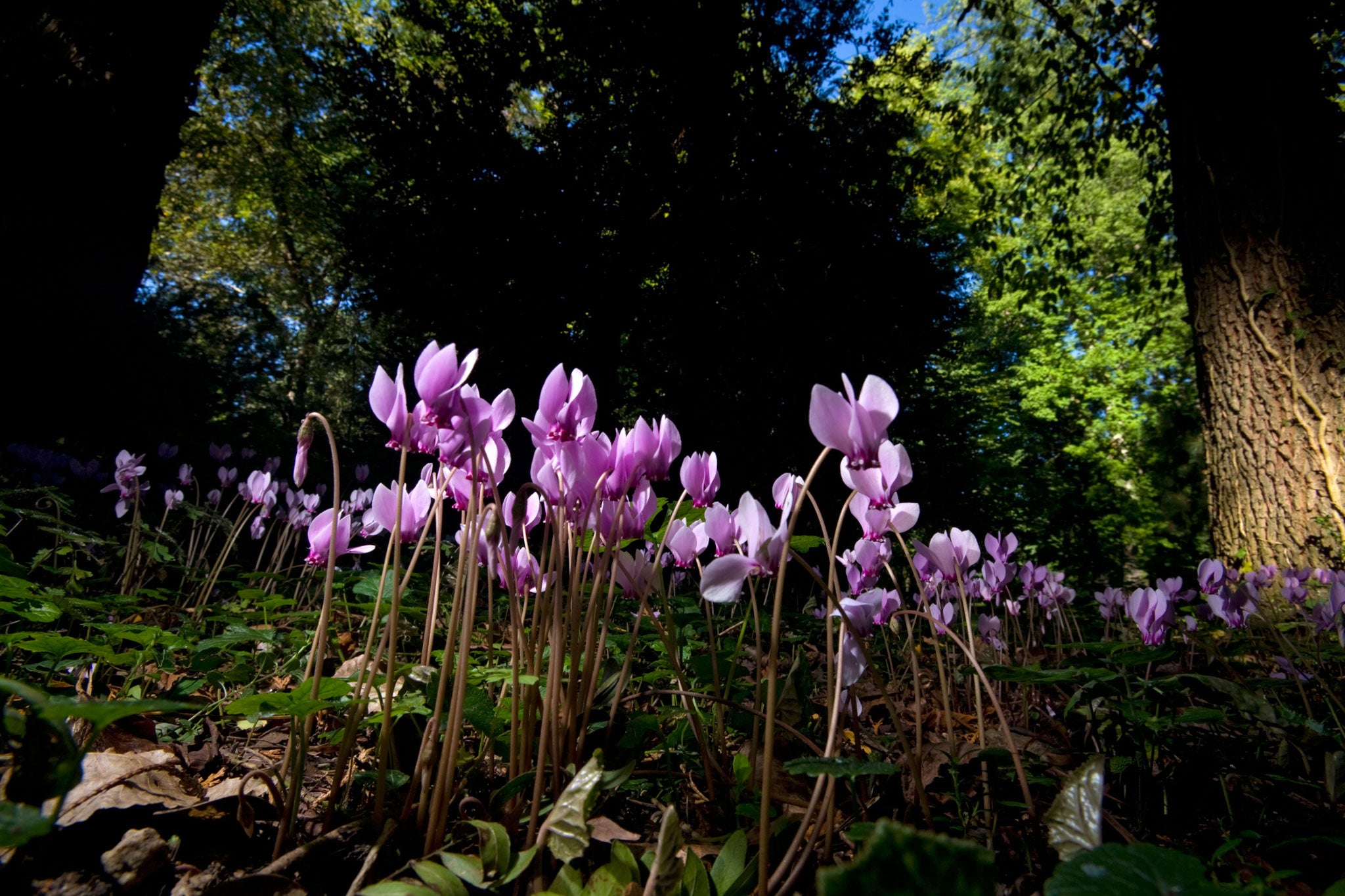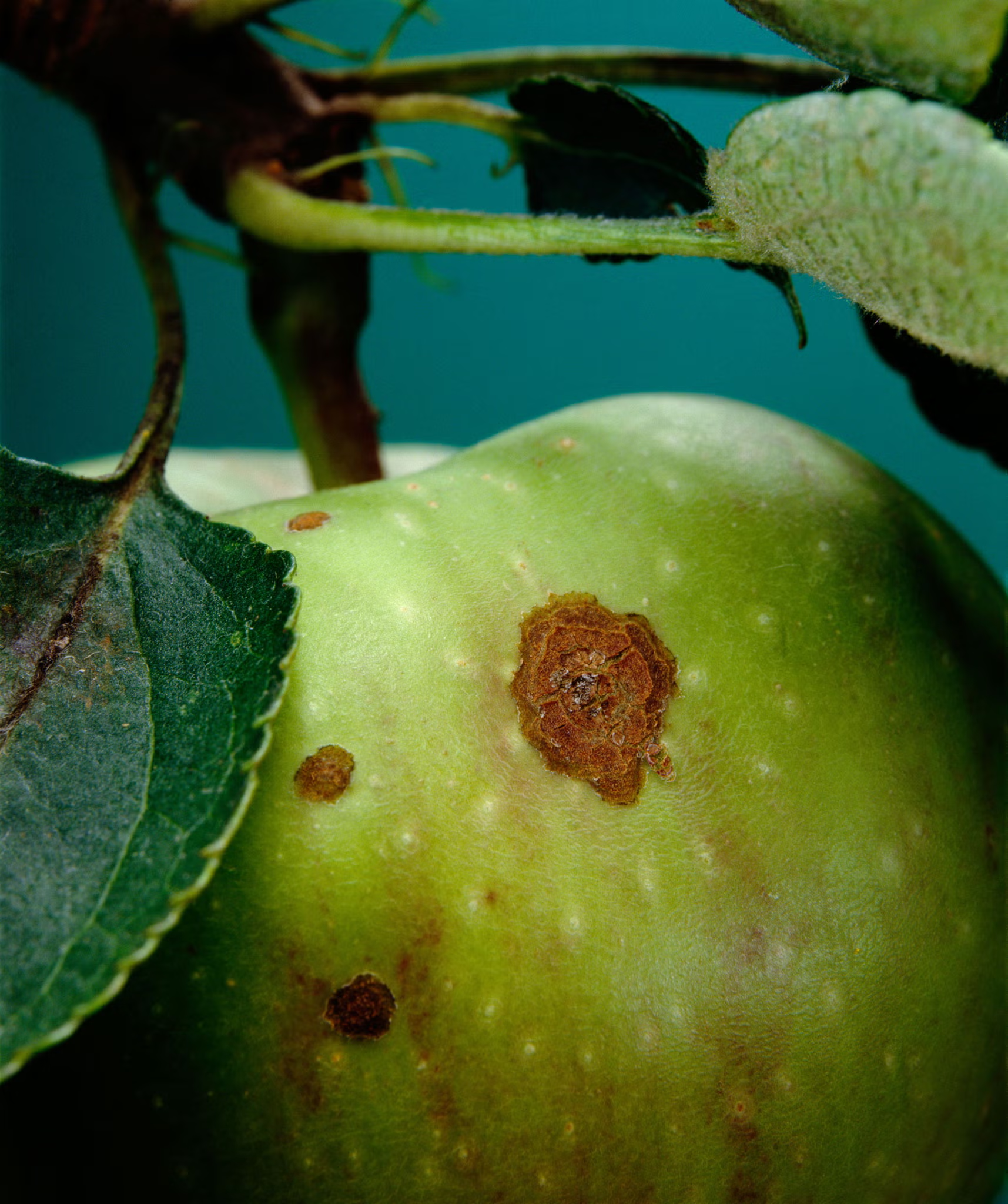Anna Pavord's A to Z of pests and problems: S is for scabs, scale insects and spraying

Scab
Hideous word. Hideous disease, which affects all members of the apple family, whether ornamental (like crab apples) or eaters (like 'Laxton's Superb'). A different kind of scab – it's a fungal disease – attacks potatoes. On apples, you'll first see a khaki kind of blotch appearing on the leaves. Affected foliage turns yellow and drops off. If the tree loses too many leaves, it is severely weakened. You will also find brownish-black scabs on the fruit as it develops. Infected fruit tends to crack and split, before it is ready to pick.
The scab fungus (Venturia inaequalis) overwinters on young stems or on fallen leaves. It's most common in wet summers and most often found where branches are crowded in too tight and there's not sufficient air blowing through the head of the tree.
You can cut out and burn some of the scabbiest shoots, but the best defence is to choose varieties of apple that show some resistance to the disease. Plant 'Ashmead's Kernel', a fine late maturing apple, 'Blenheim Orange', ready for eating around Christmas and 'Newton Wonder' for cooking. In his list of more than 80 apple trees, Kevin Croucher, of Thornhayes Nursery in Devon (thornhayes-nursery.co.uk), helpfully shows which are most resistant to scab.
Two kinds of scab affect potatoes: common scab occurs mostly on light, dry ground, lacking in humus; powdery scab is associated with heavy, wet clay soils. In either case, you'll be looking at tubers covered in warty looking bumps. You can still eat the potatoes, though peeling them will be more time consuming as the scabs sometimes pit the flesh.
Good cultivation is the best defence. Cut down on lime (if you use it at all) and increase the amount of humus in the soil, by adding as much compost as you can make. Choose scab-resistant varieties such as 'Accent', 'Ostara' and 'Swift' (first earlies); or 'King Edward', 'Nadine' and 'Wilja' (second early/maincrop). Avoid 'Desiree', 'Majestic' and 'Maris Piper'.

Scale insect
Scale insects, like aphids, feed on sap. They attack a wide range of plants, both indoor and outdoor. You may find them on abutilon, bay, beech trees, camellias, citrus, euonymus, horse chestnut trees, hibiscus, hydrangeas, junipers, oleanders, roses, stephanotis, viburnums, or willows.
Each of the different kinds of scale insect seeks out a particular target. Most look like small, slightly fluffy, white discs, very securely attached to the foliage of a plant. Each female can lay hundreds of eggs and, in the protected environment of a greenhouse, will breed all year. Many scale insects secrete a sticky liquid called honeydew which covers foliage and attracts sooty mould – a separate problem.
They are not easy to treat with insecticide, as the scale is actually a waxy carapace protecting the insect which lives underneath. You can clean up greenhouse plants such as citrus, dracaena, ficus, and orchids by wiping scale insects off the leaves with soapy water.
Shade
Shade is usually cast as the delinquent of the garden scene: difficult, gloomy and slow to respond to treatment. Town gardeners in particular moan about lack of sun in dank plots, but in gardening terms there is nothing wrong with shade. As many plants like it as don't and there is a luxuriance and mysteriousness about plants growing in shade which you never get in full sun.
In the end it comes down to temperament. Shade is an introvert and favours white and blue. The flowers that most need the sun are extrovert reds and yellows: poppies, zinnias, sunflowers, red-hot pokers.
First, work out what kind of shade you have – dry or damp, overhung or dappled – so you can put plants where they are most likely to thrive. Hostas are talked of as archetypal shade plants, but they like a rich, moist soil and would sulk in the dry patches between tree roots. But that is precisely the sort of home that the marble-leaved Cyclamen hederifolium likes best.
Some shade is better than others and the situation changes according to the time of year. In winter, the whole garden may be cast into Stygian gloom. But in the important growing season between April and September, the sun is higher in the sky and light starts to filter over roofs and between buildings in a most surprising way. Note the spots that catch most light and put the fussiest plants in those places.
Because of the angle at which light comes into the garden, a plant close to the ground may be in full shade, while a shrub 2m high may have its head in the sun. Shade caused by overhanging trees is less dense than the blocks of shadow thrown by tall buildings. Where there is tree shade, however, there are also tree roots guzzling food and drink. Provide plenty of both.
Use lashings of long-lasting bonemeal in spring. Place rich collars of dung, leaf-mould, compost or whatever bulky material you can get hold of round your shrubs. Sprinkle a top dressing of mushroom compost or other manure round everything else. Many sun plants perform better when they are half starved. Shade plants do not.
In the wild, plants adapt to particular niches and many shrubs are happier under the canopy of overhanging trees than anywhere else. V. plicatum 'Mariesii', Rubus x tridel 'Benenden' and choisya all have white flowers that glow gorgeously in shade. So, a message to all those of you who garden in shade: stop whinging and start planting.
Spraying
You either do or you don't and neither party will ever convince the other that they are in the right. I don't use insecticides, but do use weedkiller on our paths. You can have too many nettles.
Although I don't want to kill bugs myself, I am delighted if they fulfil their destiny by providing breakfast for a bird. Why are tits fed with peanuts when they could be eating the aphid eggs that are part of their natural diet?
You have to accept that prey is always a step ahead of predator. You never get enough ladybirds until there are too many aphids, but you learn not to fret. The cavalry catches up in the end, as in all the best films.
Join our commenting forum
Join thought-provoking conversations, follow other Independent readers and see their replies
Comments